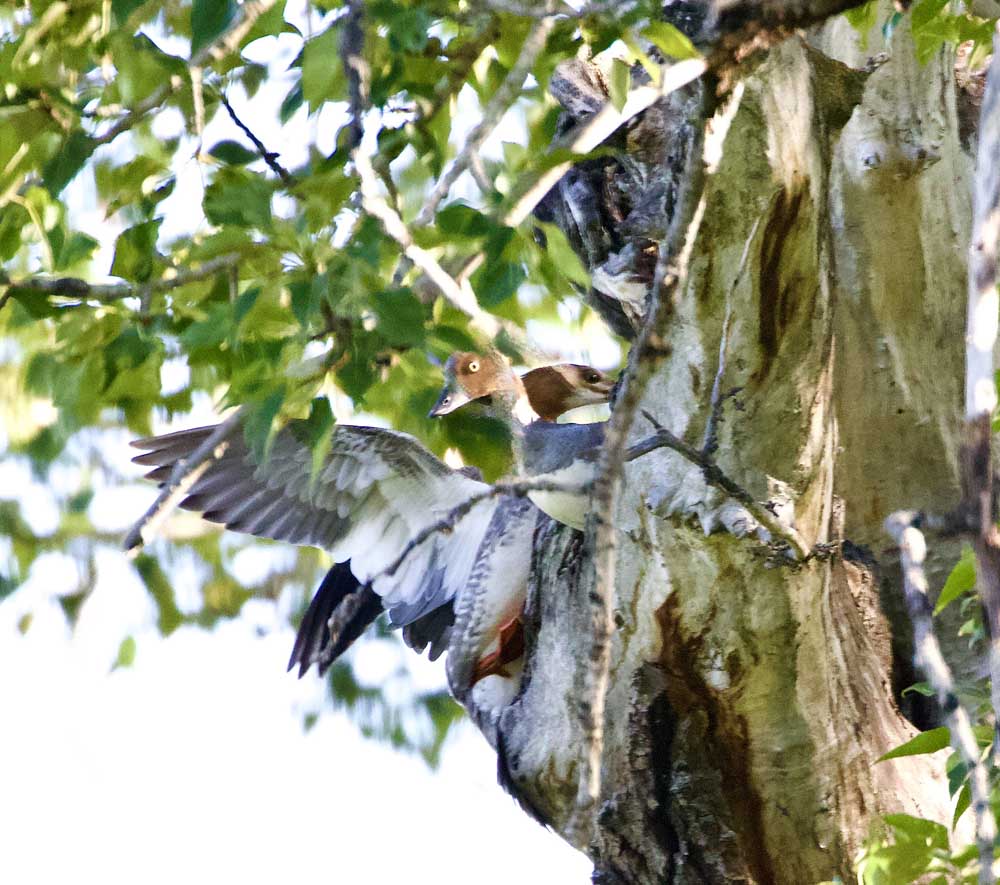Birding: Rare Barrow’s goldeneye spotted in Ilwaco
Published 11:45 am Wednesday, January 26, 2022

- Both the female goldeneye and the common merganser at the same nesting cavity.
It appears as if rare birds are beginning to appear on the Long Beach Peninsula with more regularity these days. The red-shouldered hawk, Eurasian wigeon, and most recently the birds with the GoldenEyes! Susan Stauffer and I first spotted the Barrow’s goldeneye on Jan. 8 in the Ilwaco harbor. There were two of them happily swimming around the docks, diving, and searching for lunch. Since then, many birders have reported them to eBird.
Trending
There are two species of goldeneye, the common and the Barrow’s. The common goldeneye is designated as uncommon both on the Long Beach Peninsula and in Pacific County, while the Barrow’s goldeneye is rarely seen in both. They are both medium sized, compact, diving ducks, but the Barrow’s goldeneye is slightly larger than the common goldeneye. The best identification markers for the male Barrow’s are its white piano key like markings on its sides and the bold white facial crescent on its face. The female is not as flamboyantly dressed. It has a dark brown head with a small yellow bill. The bill is a good ID feature. The female common goldeneye often shows a yellow band on its bill, but the bill is rarely all yellow and is big compared to the female Barrow’s. The male common goldeneye has extensive white shoulder feathers and a rounded white spot on its face. Its head is a glistening green-black. The Barrow’s male has a purplish sheen to his head. Of course, like their names, the adult birds are those with goldeneyes!!!
Both species are cavity nesters, and females regularly lay their eggs in the nests of other species such as that of the common merganser as well as in the nests of other female goldeneyes. Their food choices are the same. In winter their diet consists mainly of mollusks and crustaceans, while their summer or breeding diet consists mainly of fish, insects, and plant material. Both species of goldeneye swim and rest on the water and are capable of diving for long periods of time to forage underwater for their favorite prey.
Chicks leave the nest one day after they hatch. The female stands at the bottom of the tree and calls. The babies jump from the nesting cavity one after another and tumble to the ground. It must a hair-raising journey to watch as the chicks are jumping from nests up to forty feet high. These babies are daredevils just like James Bond, the main character of the movie GoldenEye! Happy birding!









